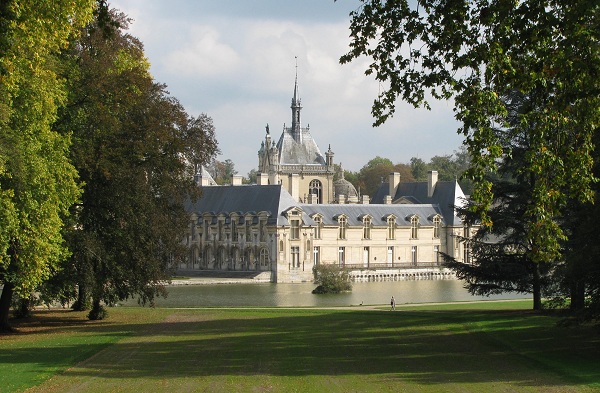
The Chateau de Chantilly is 25-minute train ride (26 miles) north of Paris at the entrance to the Picardy region. From the Chantilly train station it’s a 20-minute walk through this quiet old town of 12,000 to the chateau. Or you can take a free city bus that leaves from beside the train station.
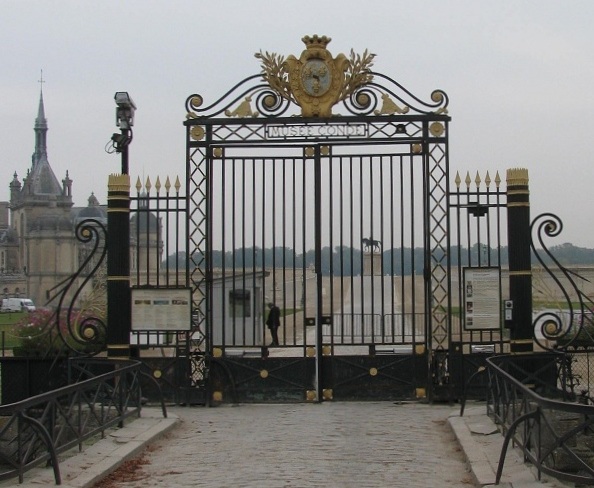
The gate announces the Condé Museum that lies within the chateau.
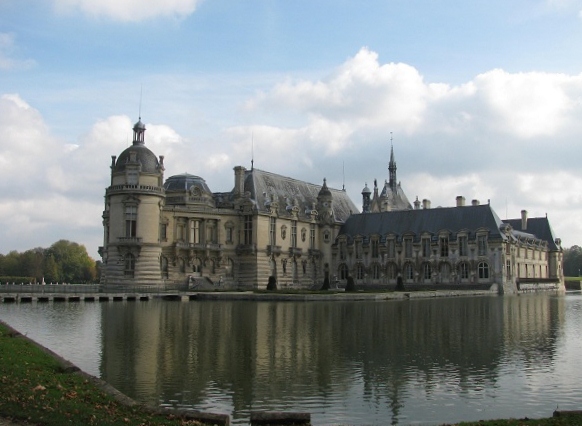
Actually, it’s difficult to figure out which is the side and which is the front of Chantilly because the building lacks symmetry. The chateau is in fact comprised of two connected buildings, one a 17th-century palace, the other a 19th-century museum/chateau built on top of the remnants of a medieval fortified castle.
It was a grey day, though occasionally the clouds would part, as in the photo above, before closing again, as in the view below, from the opposite side, just above the formal French garden.

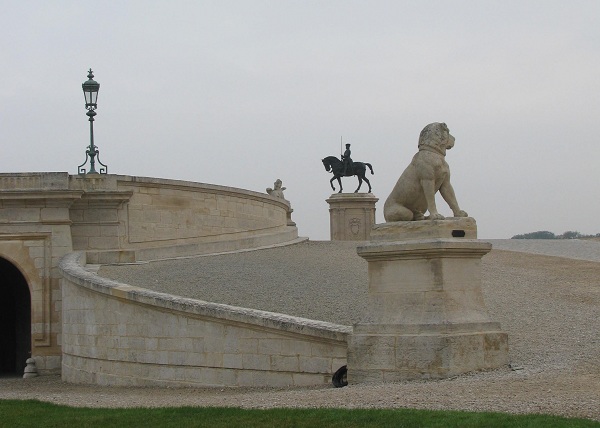
Below, a view looking back from the edge of those formal gardens.
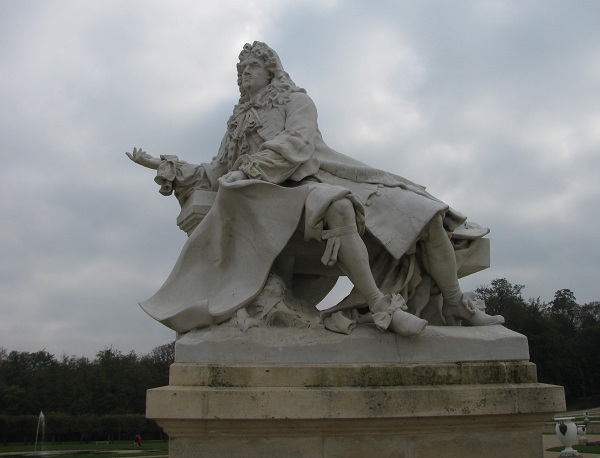
They were designed by Andre Le Notre, the father of French gardens and have been restored in the past few years to their 17th-century geometric glory as part of a vast on-going restoration project of the entire domain. Here is Le Notre holding plans for the project…
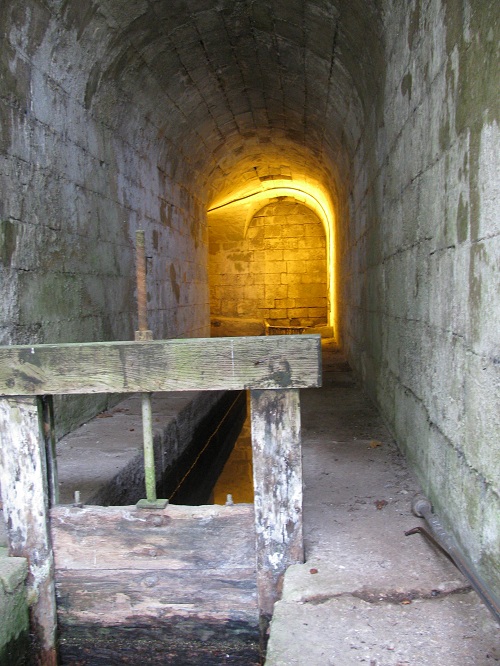
which include an aqueduct that feeds the basins and allows the fountains to run 24/7.
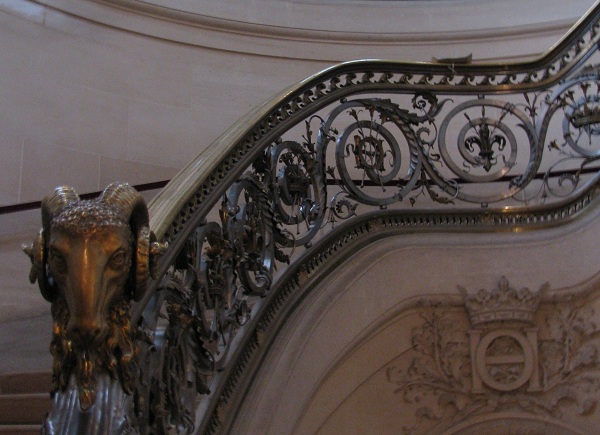
Inside the chateau, there’s an ornate goat’s head banister, one of many places that present the letters HO for Henri d’Orléans, fifth son of the last King of the French, Louis-Philippe, a.k.a. the Duc d’Aumale (1822-1897).
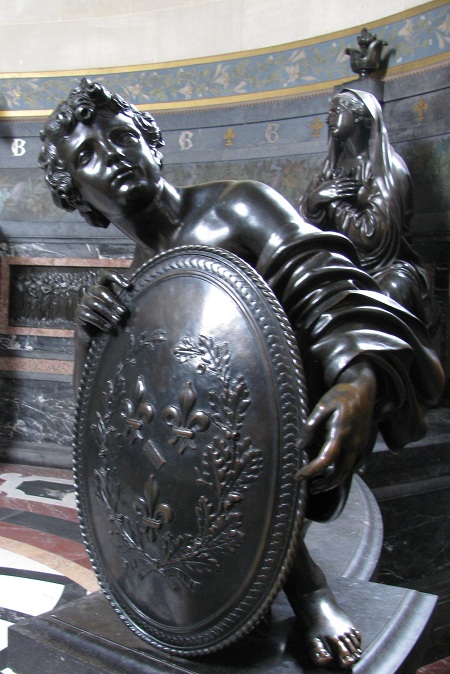
When only 8 years old, Henri inherited the Domain of Chantilly from his godfather, the last Prince de Condé. Here are the arms of the House of Condé, cousins to the Bourbon kings after 1588:
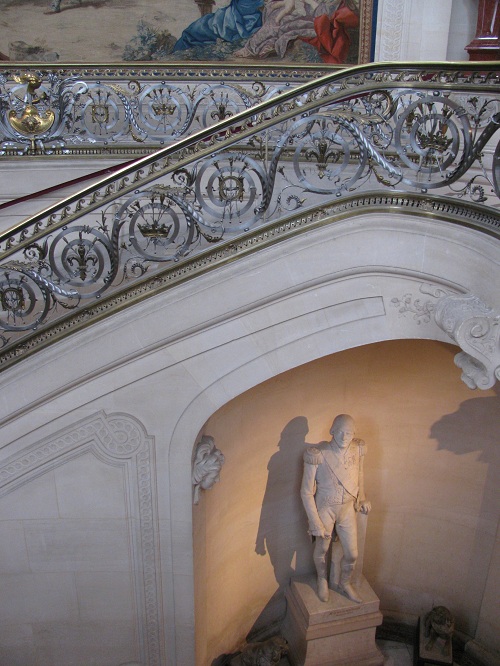
When Henri d’Orléans’ father was overthrown in 1848, the family went into exile in England (Orleans House, Twickenham). Henri also spent time in Sicily, near Palermo. He eventually returned to France after the fall of Napoleon III in 1870. He then set about constructing new portions of the chateau and transforming the whole into a luxuriant museum honoring the Condé and Orléans families.
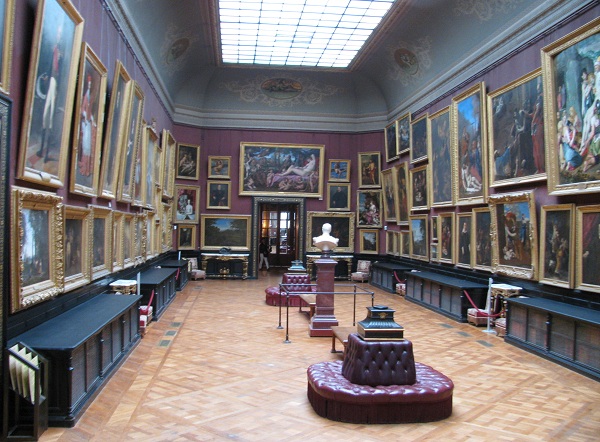
Since his children died before he did, Henri in turn bequeathed the Domain of Chantilly and its remarkable collections of art and books to the Institut de France, an institution that since the 17th century has brought together the official intellectual and cultural elite of France. The Duc d’Aumale made the bequeathal on the condition that the Institut de France would maintain the domain and its collections and neither lend nor alter the presentation of the elements of those collections. (Should the institute fail to fulfill these conditions the domain will revert to the decendants of his numerous neices and nephews.)

Here the Duc d’Aumale gazes upon one of the painting galleries in his museum.
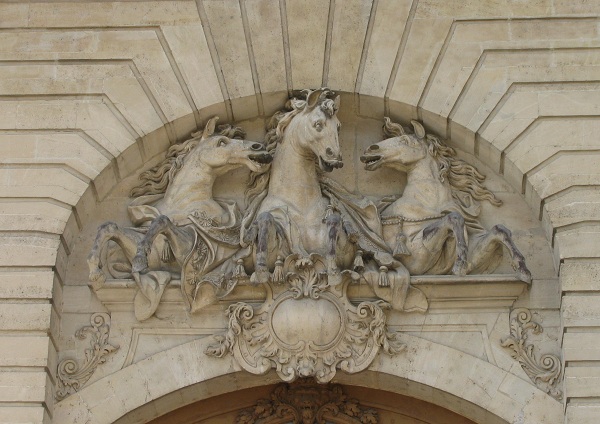
Chantilly is also famous for its palatial stables, where equestrian shows and presentations are given. These sculptures appear above the entrance to the stables.

Parting shot of the chateau:
I’ll be exploring and explaining Chantilly in a future article. In the meantime, more information about the Domain of Chantilly, which includes the chateau, museum, park and stables, can be found on the domain’s official website.
– Photos and text by Gary Lee Kraut


We visited the chateau with our daughter back in June 2002. I remember what a beautiful gem it was, both inside and outside. Plus, the drinks and dessert we had at outdoor cafe at the chateau really hit the spot. Thank you for posting these photos!